
14 Tips on How to Select the Right Software Development Framework
If you plan to dive into the art of software development, you need software development frameworks that will help the best way they can. Using the right...
Are you searching for how to improve and add structure to your software development workflow? An excellent first step is selecting the right software development methodology for your project. However, the biggest problem when discussing software development methodologies is variety. Thankfully, here you now have an extensive, explanatory guide for some of the most efficient and popular software development methodologies with this article.
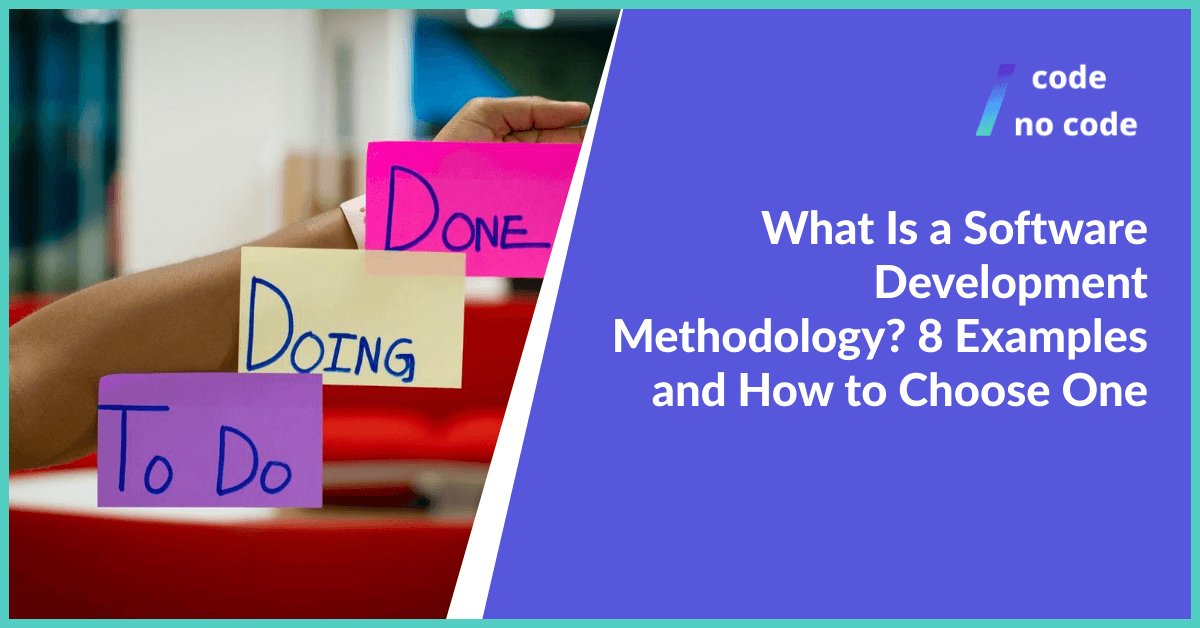
Before we can choose the best one, we need to know what a software development methodology is. But even before that, we need to address perhaps the biggest deceit about software development methodologies – one size fits all.
If there is anything sure about software development methodologies, it’s that there’s no certainty of outcome. No one software development approach will result in a perfect product every single time. And this is not because of inadequacies on the side of your software development team.
It’s just that different software development methodologies function exclusively well for a specific software development project.
After finishing this article, you will have learned all about this and will be able to make an informed choice on the approach that fits your project requirements best.

Software development methodology, or in software engineering, system development methodology, refers to a process or series of procedures used to structure, organize and control the whole development process.
You can also use these methodologies with No Code tools to make your development around five times faster. Read our article about What is No Code to find out more!
It has less to do with programming and more to do with planning for an efficient software development life cycle.
The software process or software life cycle are close synonyms. And the models and methods that describe approaches to tasks throughout a software process or life cycle are what we call software development methodologies.
All methodologies have their strengths and weaknesses. Here, we will look at informative details about each method, followed by their respective strong points and pitfalls.
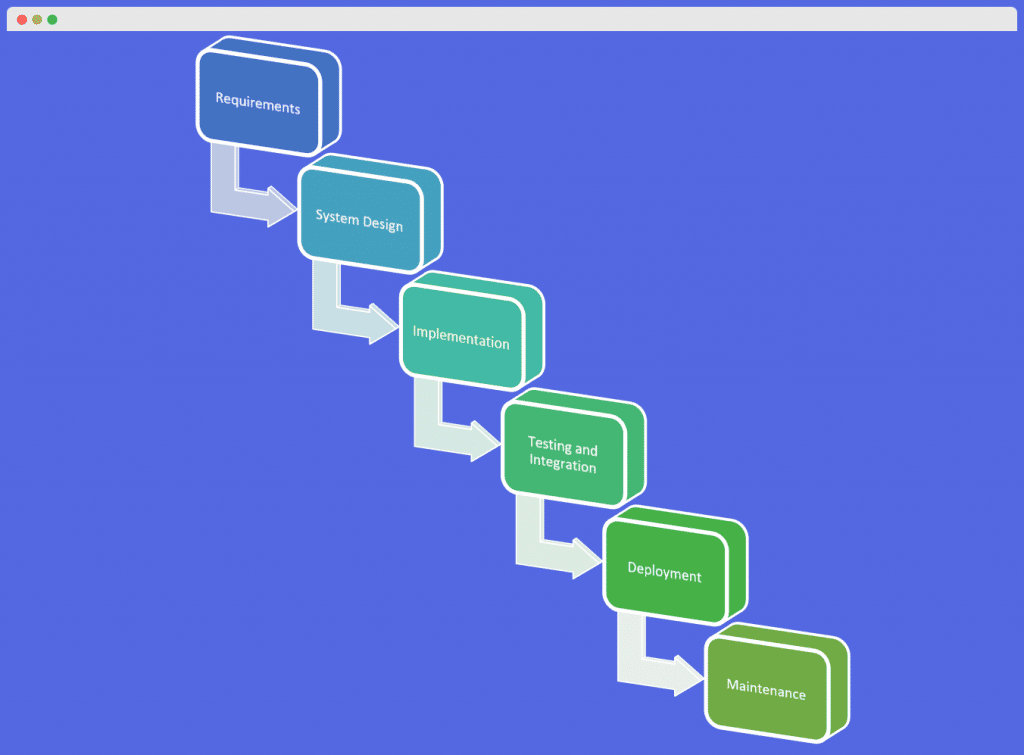
The waterfall methodology is quite illustrious when it comes to the traditional software development methods. Nevertheless, it is still relevant in many modern software development projects.
As the name implies, the workflow only goes in one direction in the Waterfall development method. That is, the Waterfall model is rigid in its approach. And should a software project using the Waterfall methodology require changes, the Waterfall model demands a complete restart.
It involves dividing development into phases, arranged in sequential order. The development team must complete each stage before moving to the next. That makes it non-ideal for software projects with fast-changing requirements.
The waterfall development method functions with the following basic principles or phases:
This is the conceptualization phase, where developers define the problem the software project is aiming to fix. They also describe the initial software concept and expectations for the project in this stage.
Here, developers determine the software architecture and system core.
The team splits up to develop the software in separate units. There is also testing of each isolated section for functionality.
The team combines all the output of all the separate units. And they test and fine-tune the integrated system for optimal functionality.
Software is ready for customer use.
Developers troubleshoot or get feedback from clients during use and repair such issues as they come.

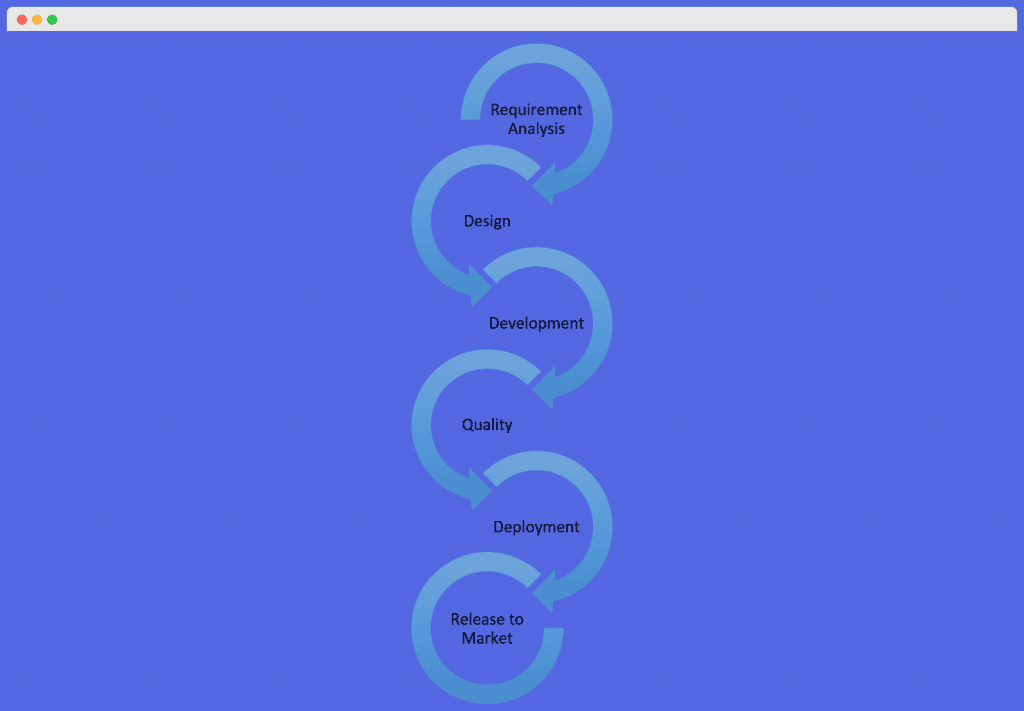
Perhaps the most popular modern software development methodology is the agile software development methodology[1]. In a word, Agile is adaptive. How so? The agile methodology came as a relief from highly inflexible and structured methodologies like Waterfall.
The emphasis of an Agile software development methodology is communication between individuals. That is, the customers, developers, and users instead of focusing on the technical tools and rigid procedures or documentation.
Agile encourages developers to engage in iterative and incremental development. Teams divide tasks for developing software in short sprints of about a week to one month. Each iteration has a defined goal to derive a prioritized testable output.
Agile development methodology calls for collaboration and cross-functional teamwork. And teams applying it must show commitment to tight feedback cycles and mini-increments in functionality.
Agile answers what the development process should look like, but it does not specify any specified techniques for building software. That is why many professionals don’t exactly consider Agile as a methodology. More so, it is a software development methodology framework.
It comprises the principles on which Agile software development methodologies like scrum, crystal, extreme programming (XP), and feature-driven development (FDD) build.
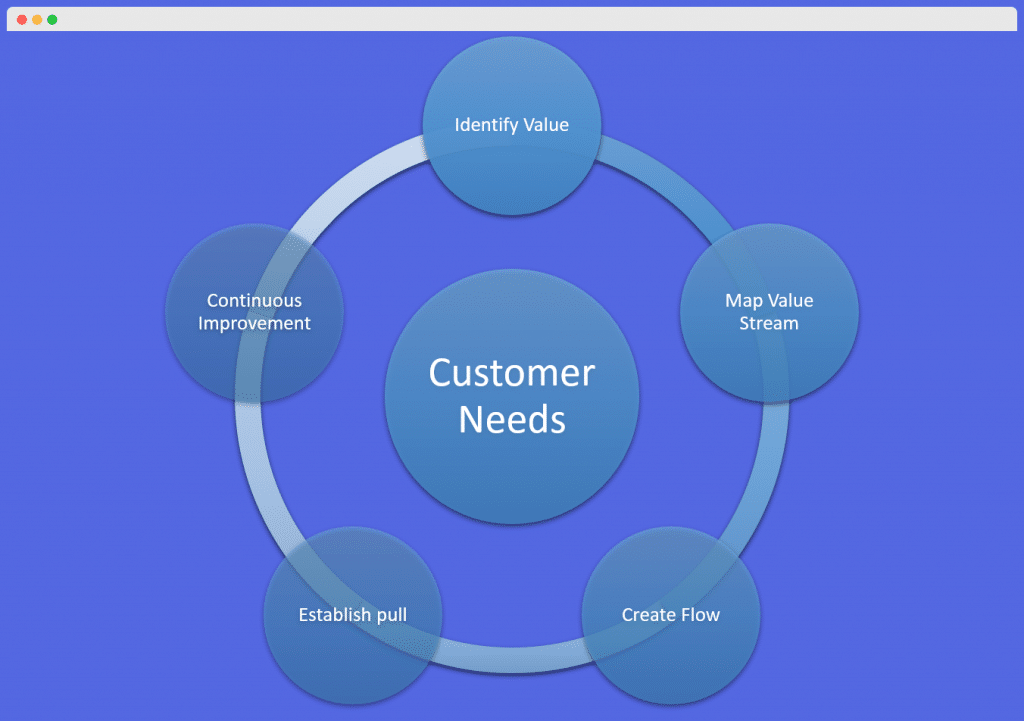
This Toyota-inspired framework came about from the principles of lean manufacturing. It gets its basic principles from the Lean Toyota Production System, which was majorly a method to eliminate wastage in manufacturing effectively.
At its core, lean development combines linear and iterative systems development methodologies. And while Agile describes some of the best practices for developing a software program, it does not include instructions for their application.
Moreover, it does not explain how these practices can scale beyond software development projects. Lean fills in for those drawbacks.
The lean development methodology entails applying the following principles in various projects and industries, including optimizing software development processes.
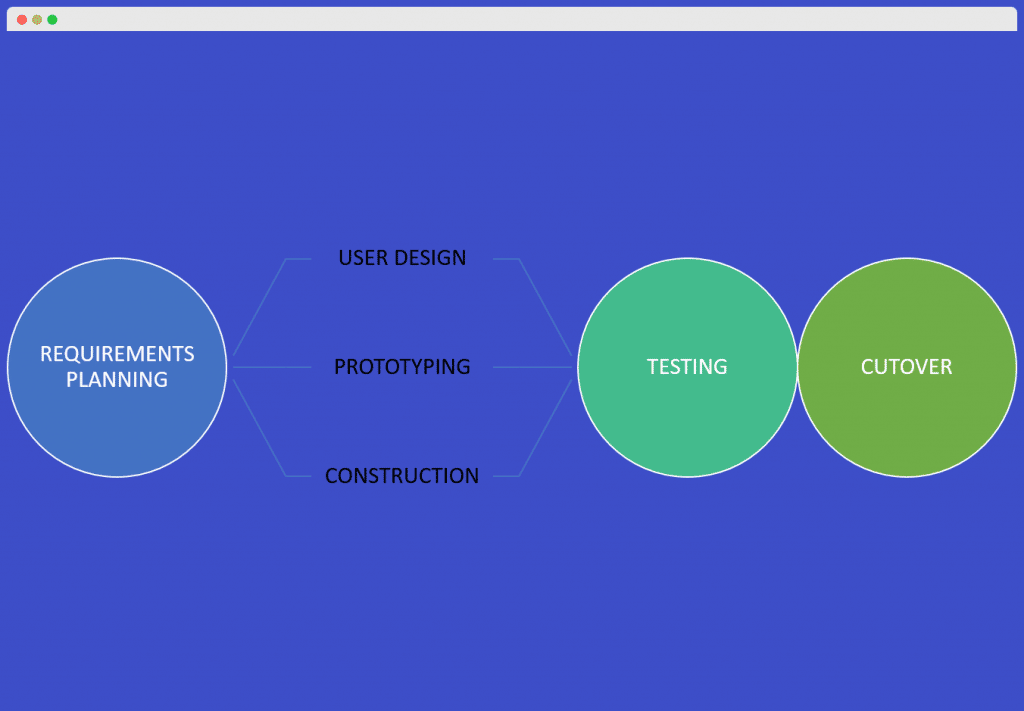
IBM first used rapid application development (RAD) to describe a software development process introduced in 1991.
Rapid application development methodology is one of the best software development frameworks for building a high quality system with low investment cost. And more so, it makes this achievable in unstable markets[3] and in relatively less time.
That is primarily due to Iterative Prototyping, active user feedback, and computerized development tools (such as Object Oriented programming techniques, Database Management Systems, Graphical User Interface builders, Computer-aided Software System Engineering (CASE) tools, etc.)
Rapid application development is comprised of four stages;
This is the project specification and requirement definition phase.
There is iterative communication between user and developer throughout the development process. Here, the feedback, prototype development, and testing procedures cyclically continue until a satisfactory level of refinement.
Developers deploy the final software based on the prototypes developed in the former phase.
This final phase includes data conversion, exhaustive product testing, and user training.

Firstly, many professionals don’t consider prototyping a complete development methodology by itself. It is more of one of the software development approaches that encourage certain features in the context of a complete methodology (for example, RAD and Spiral).
The emphasis here is on building prototypes and iteratively making increments until the desired final product.
This iterative approach derives the majority of its principles from the RAD framework. It is a refined methodology that prioritizes business needs over technological or engineering excellence. It also features extensive written documentation, which is lacking in most Agile development frameworks.
This is an agile-based methodology that sections software development into four stages – Inception, Elaboration, Construction, and Transition. In each of these phases, developers may apply the following engineering disciplines with varying levels of emphasis.
They include; Business Modeling, Analysis and design, Implementation, Testing, and Deployment.
Developers typically use this agile software development model in low cost requirement projects. The emphasis of extreme programming is on flexibility of the process models.
If none of the above works for you, you may want to learn about other software development methodologies such as DevOps, Scrum, Feature-Driven Development, and Spiral. At the end of the day, what you need most is a basic understanding of the software project or business problem.
Once you have that outlined, choosing a methodology (or a combination of elements from different methodologies) just depends on what your priorities – budget, speed, customer-oriented software – are.
Be sure to look into No Code tools to optimise your software development process even more and make it up to 10 times faster.
Also, don’t forget to follow us on Twitter to get regular updates on the No Code industry.